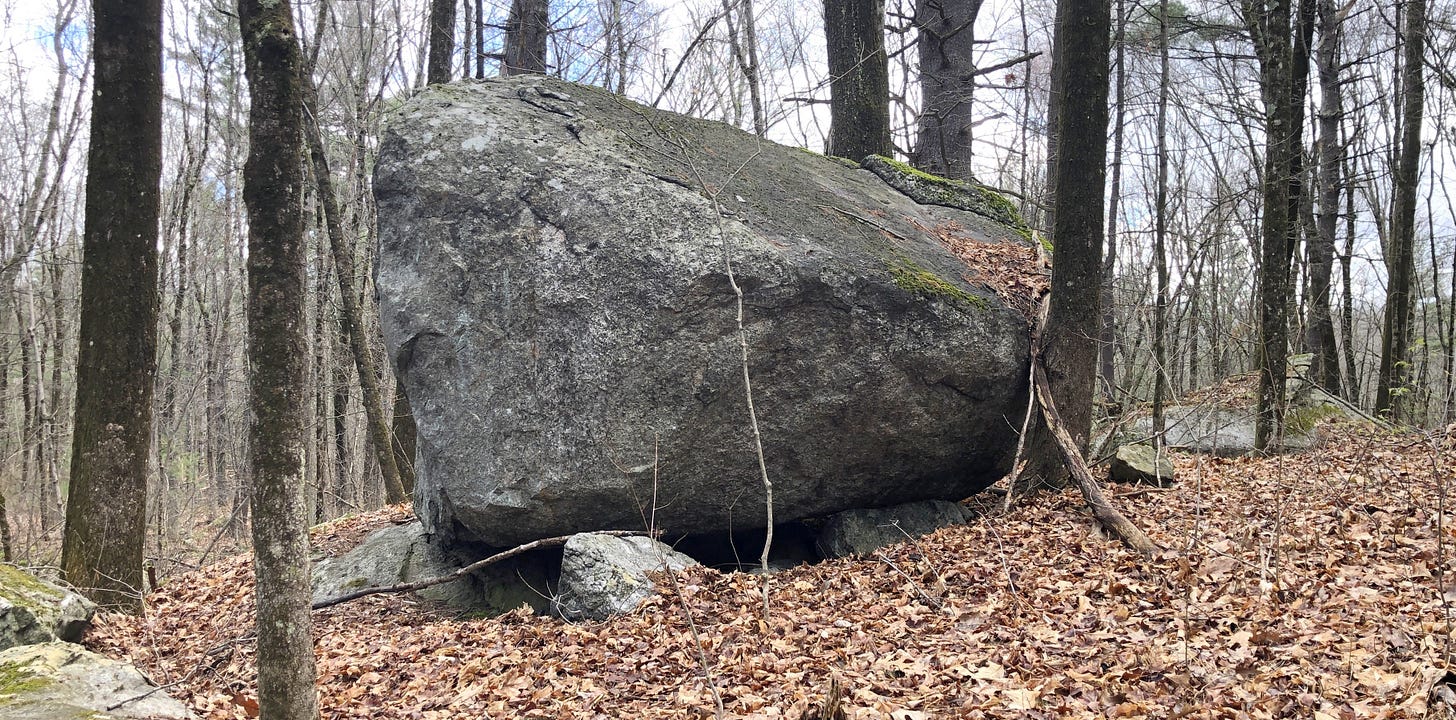Out exploring in Berlin, Massachusetts again this past weekend, at a couple of new locations... Check out this huge boulder perched upon three smaller stones and the bedrock outcrop it sits upon, overlooking a vernal wetland.
Commonly referred to as Glacial Erratics, stones such as these were picked up and carried by glaciers as the glaciers grew and shrank over the course of the Ice Age. Geologists believe this “perch” is simply how the stones landed as the glaciers melted, and tell us what now appears to be a perch is simply the result of the erosion and melting, over time, of other materials which once filled the space beneath the boulder — smaller stones, mud, ice and dirt. The stones holding up the boulder are just what is left of a debris field now mostly washed away.
I’m not so sure. There are cases where these boulders appear to be deliberately perched, with intention in their placement. The huge stones often appear worked.
Too many of the early hypotheses in Geology were made at a time when they believed the Indigenous Peoples of what we now call North America were latecomers, when it was believed this continent was a Primeval Paradise, and Unspoiled Wilderness. That’s not true. We know better now, thanks to many discoveries over the last 100 years.
The Indigenous have been here for more than 12,000 years, even in the Northeast, lands once thought to have been very lately settled. And much of this land was settled and tamed, but through agricultural methods most Europeans simply didn’t recognize — and early reports of curated forests, park-like woods, and acres upon acres of corn and other crops, were forgotten, as new settlers marveled at the supposed natural bounty of the land given them by God.
Having grown out of the culturally-biased 19th century, Geology needs some decolonization, or at the very least needs to face up to its own ignorance of what was actually going on with Indigenous habitation and population, and impacts on the physical environment.
Perhaps nature’s perfection — which used to be credited to God, let’s remember, by those same early geologists — was over-stated. And perhaps nature’s capacity was occasionally over-explained, erasing away any human agency at the time unknown to those men.
Save for using a time machine so one could witness these occurrences over a span of geological time, one perhaps can’t prove conclusively what human hands aided and what was purely natural.
But the uncovering of this more recent knowledge of how long the Indigenous have been here and how they lived, and how many of them were here, and how they worked with stone, changes the application of Occam’s Razor in many instances, as the human factor was never figured in.
Given that much of early geology is based upon ignorant assumptions about North American human populations and their impacts and manipulations of their environments, a re-examination of resulting assumptions, such as the supposed natural origins of perched Glacial Erratics, seems merited.
— Mike








Share this post